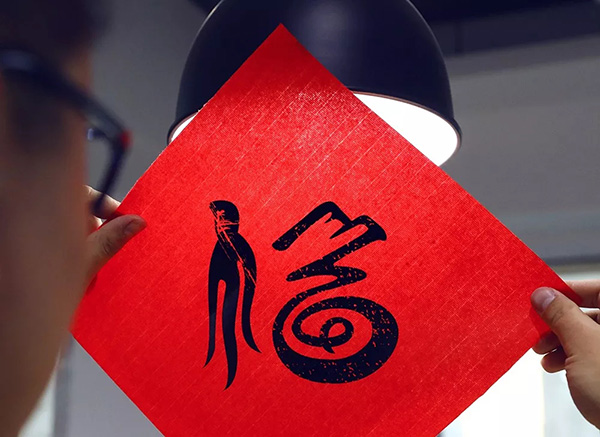
The Chinese character Fú means "fortune" or "good luck” and is associated with Spring Festival. Fu decorations hang on the doors of Chinese homes. The traditional characters are printed on paper or stitched in a fine fabric.
Lin Xiang was born in the 1980’s. In one year, he designed 32 Fu signs, each possessing inherent cultural characteristics only found in a specific province or a city.
Beijing Fu
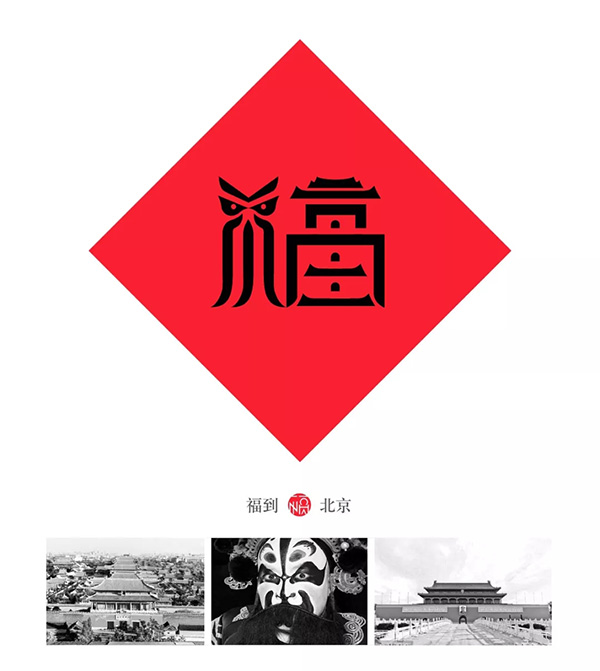
Beijing Fu integrates elements such as Tiananmen Square, Forbidden City and Peking Opera, emphasizes Beijing’s importance and cultural characteristics.
Shanghai Fu
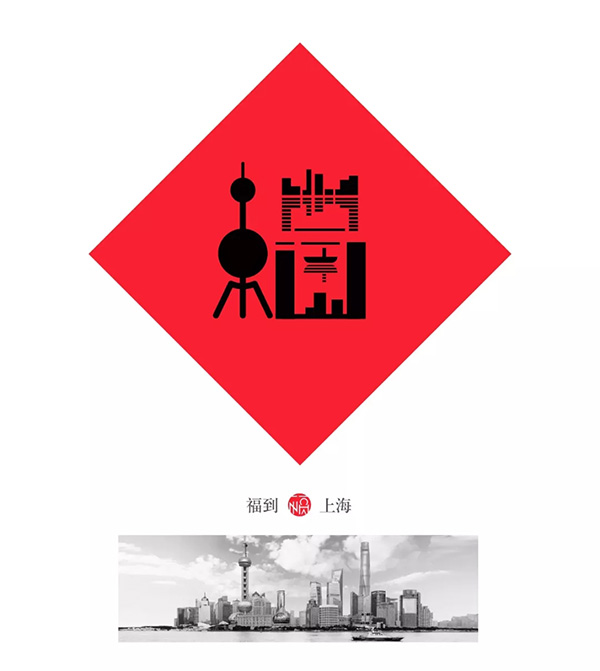
Shanghai Fu is really photos of Bund artwork!
Chongqing Fu
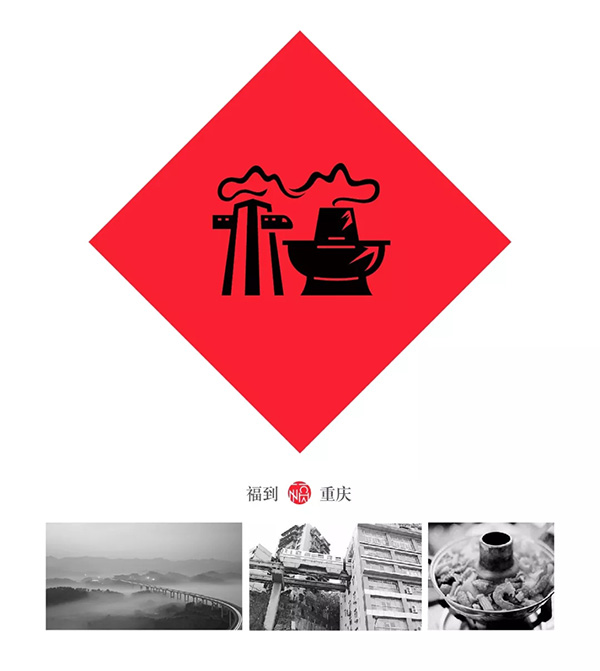
Chongqing Fu is very tasteful. Hot pots and heavy traffic are characteristics of Chongqing and highlight the faction of a happy festive reunion.
Suzhou Fu
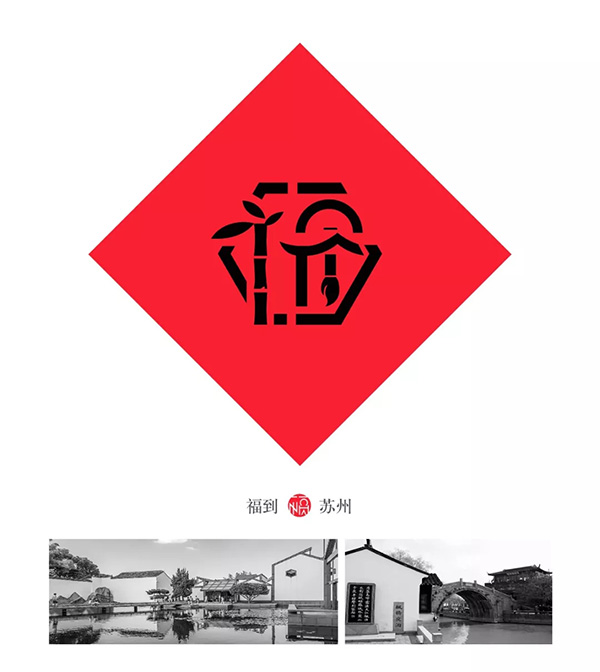
Suzhou Fu embodies the charm of China’s southern gardens, pavilions, bridges, and other cultural identifiers.
Xi’an Fu
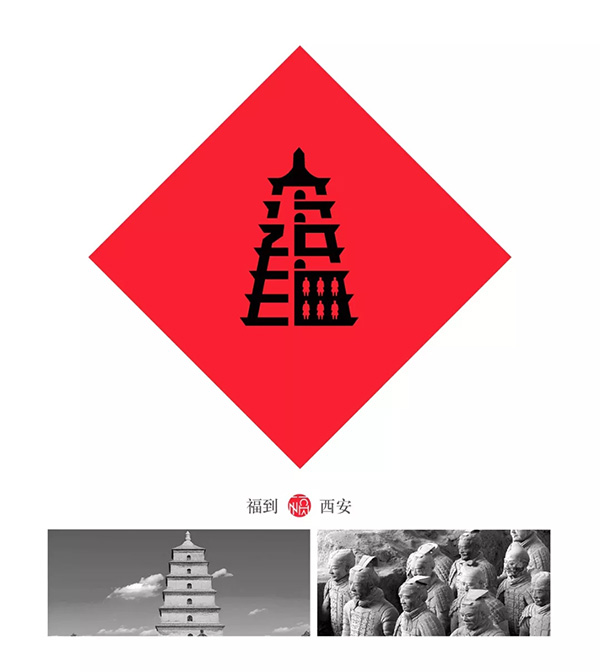
Xi’an Fu encompasses the city’s historical significance. As China’s original capital city thousands of years ago, it is the cradle of Chinese civilization and home to the Terracotta Army and Wild Goose Pagoda.
Henan Fu
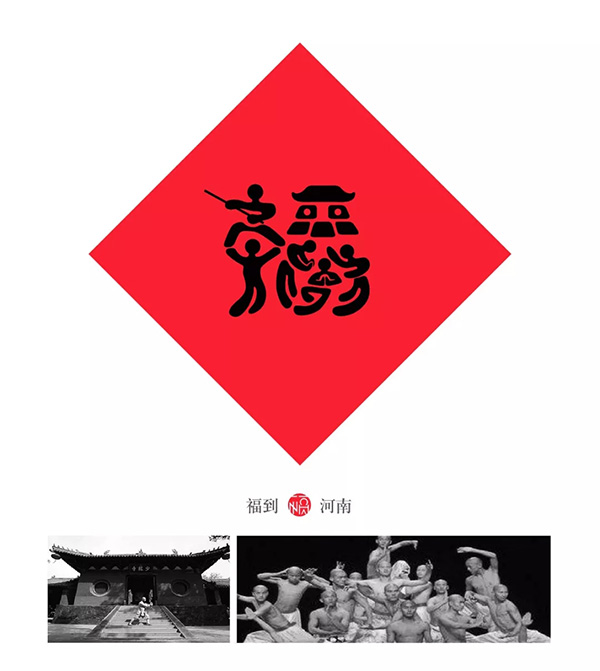
Henan Fu centers on the Shaolin Temple, the birthplace of Chinese kungfu and Zen Buddhism.
Hunan Fu
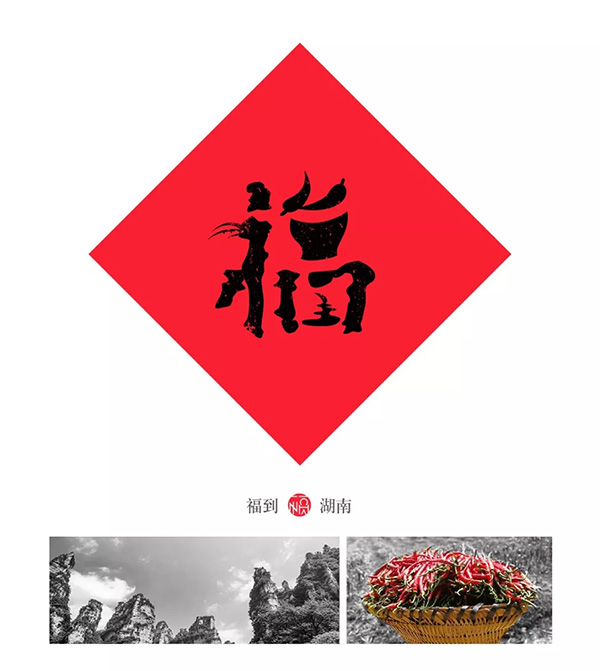
Hunan Fu combines the beauty of Zhangjiajie and Hunan pepper, two emblematic features of the province’s culture and tradition.
Fujian Fu
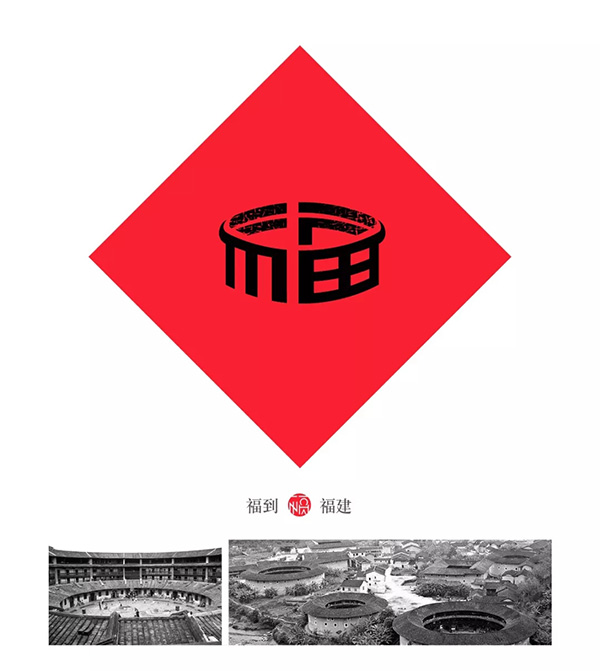
Fujian Fu, representative of Fujian Hakka Earthen, Hakka Earthen is unique in China and the world, the fabulous, fantastic residential construction.
Guangdong Fu
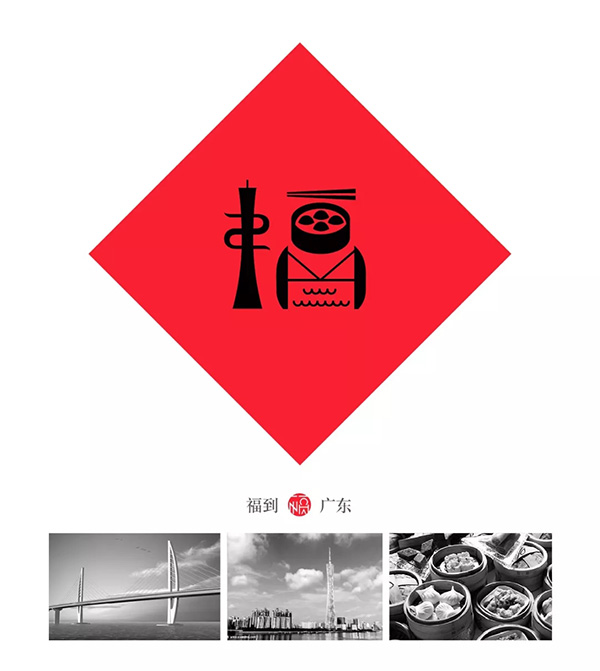
Guangdong Fu (left) is home to Guangzhou Tower, on the right, the city is famous for its early morning tea, and the Hong Kong-Zhuhai-Macao Bridge.
Hainan Fu
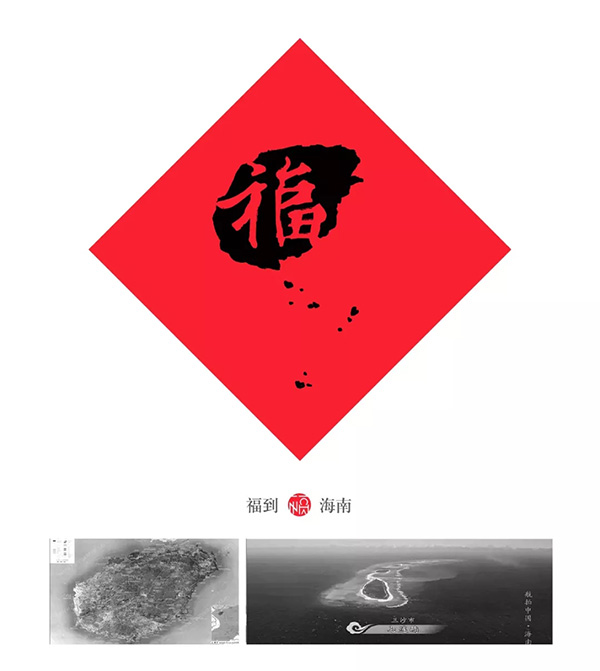
Hainan Fu features a red and black map of the island province with the Fu character emblazoned over it. The design is a happy Lunar New Year message to the people of Hainan.
Sichuan Fu
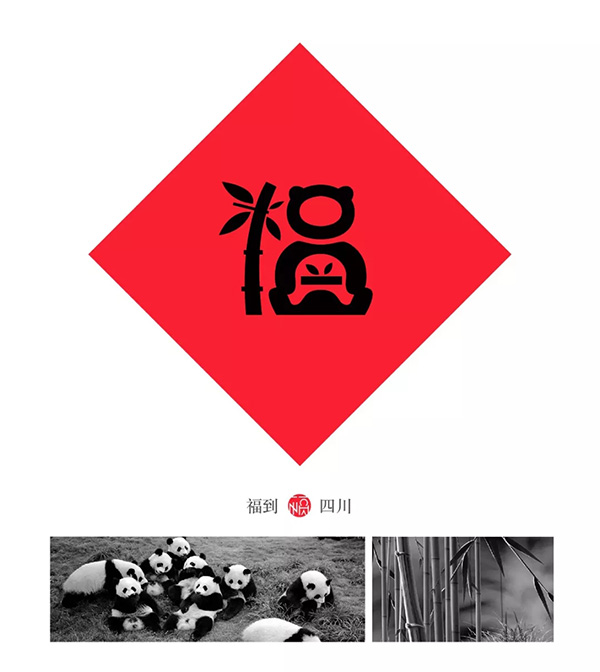
Sichuan Fu can only be about the panda, arguably the most famous of all of China’s national treasures. An image of a panda sitting next to a bamboo tree with a small root in its belly is an image all children can enjoy.
Guizhou Fu
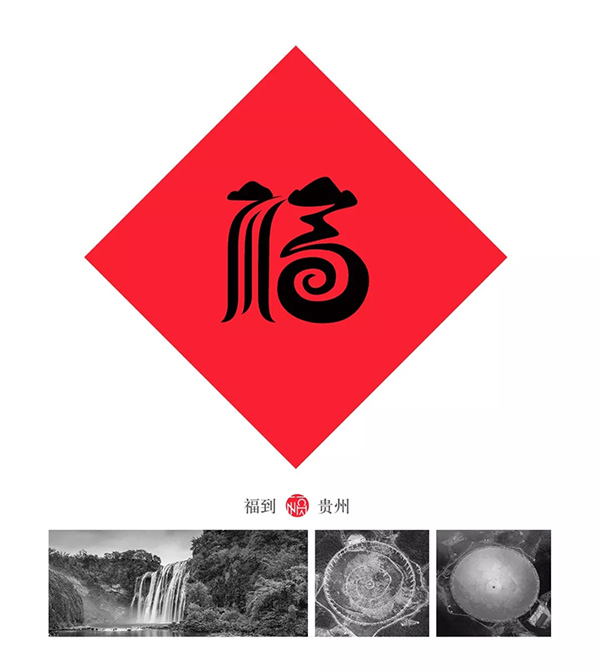
Guizhou Fu depicts regional landmarks like Jiaxiu Pavilion, Fanjing Mountain, and Huangguoshu Falls.
Yunnan Fu
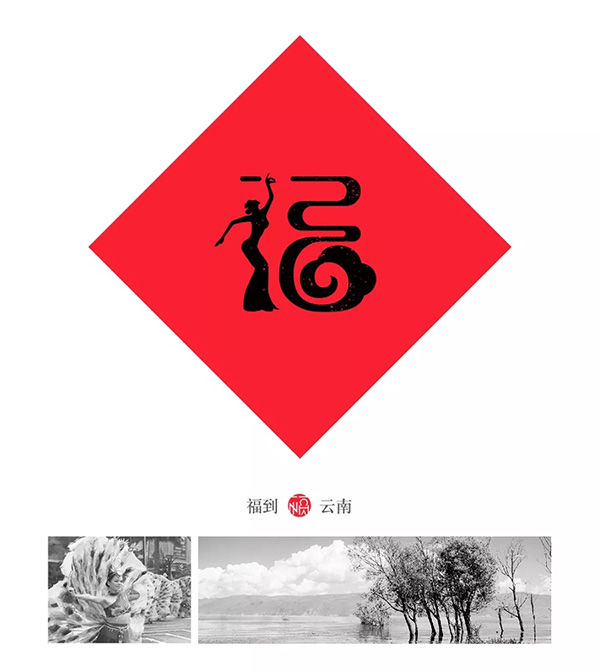
Yunnan Fu is a combination of ethnic folk dances and landscapes.
Gansu Fu
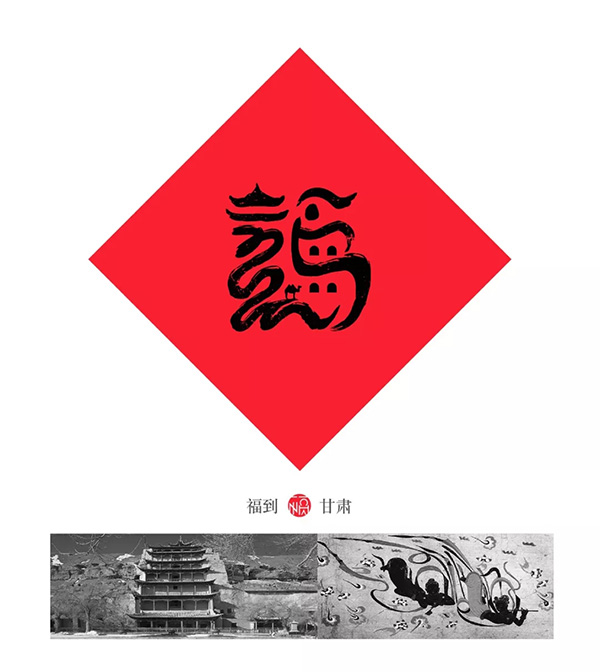
Gansu Su features thick flowing clouds as the Dunhuang murals fill the sky, absorbing Jiayuguan’s unique architectural style.
Taiwan Fu
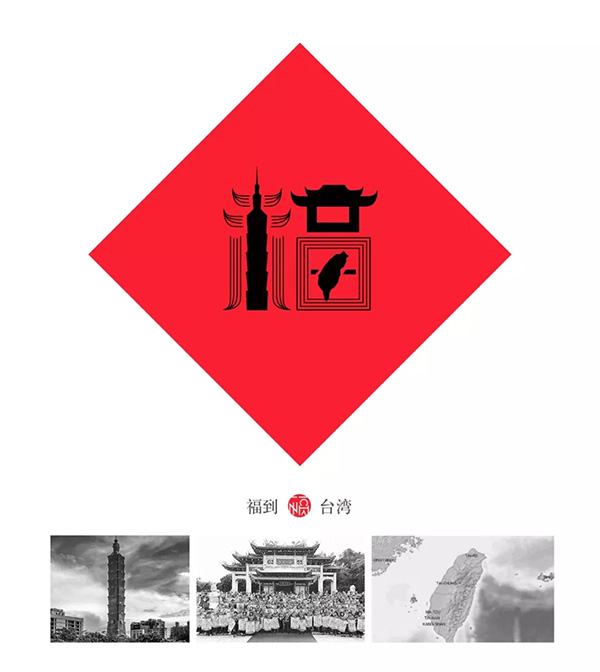
Taiwan Fu combines the Taipei 101 building with maps, and lines running up and down.
Inner Mongolia Fu
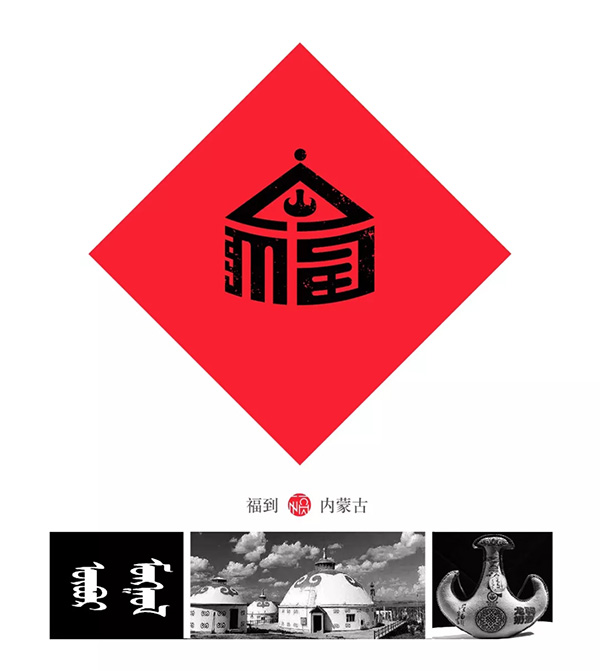
Inner Mongolia Fu showcases ethnic flavor combining Yurts, the hip flask, heroic pride and the expert horsemanship of its people.
Tibet Fu
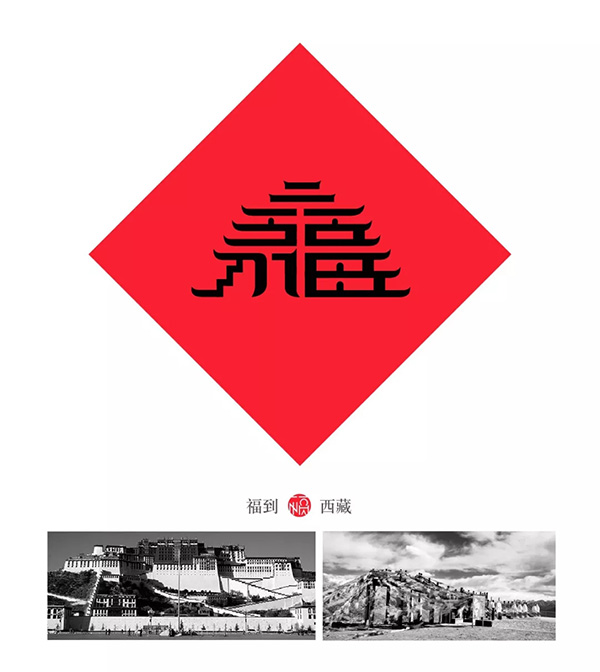
Tibet Fu combines the images of Potala Palace, and Mt. Everest, turning them into a diamond-shaped blessing.
Ningxia Fu
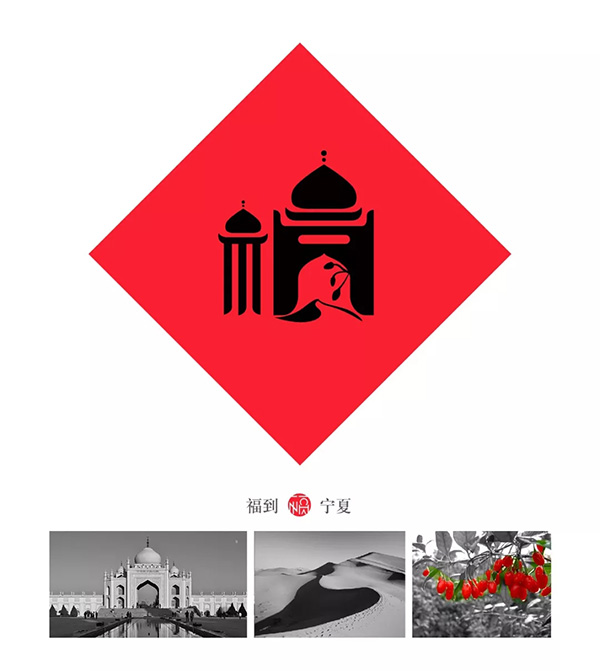
Ningxia Fu uses the ancient Najia mosque and village, traditional Hui-style architecture representing its culture, customs, food, religion, agriculture and commerce environment.
Xinjiang Fu
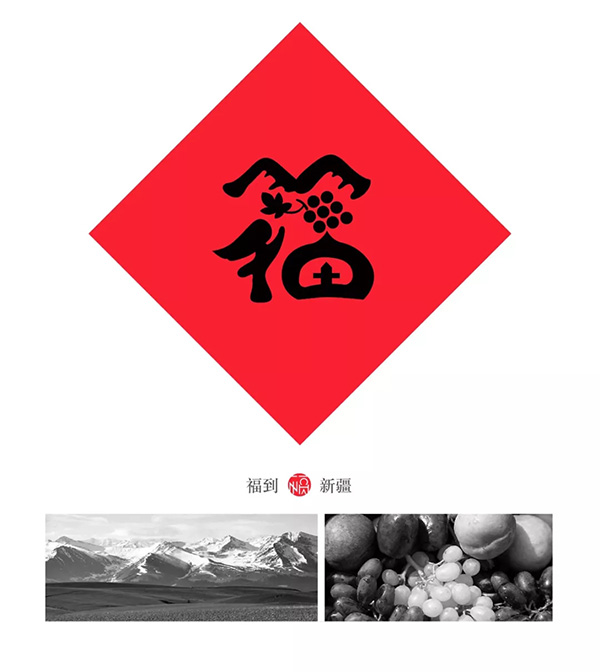
Xinjiang Fu uses fruit and snow-capped mountains to symbolize good wishes.
Liaoning Fu
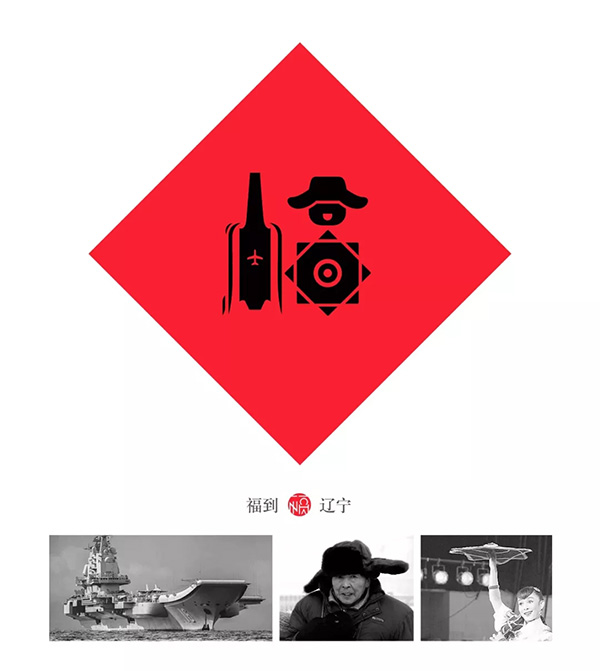
Liaoning Fu has an image of an aircraft carrier, with the people from Northeast China wearing thick winter hats and.
Shandong Fu
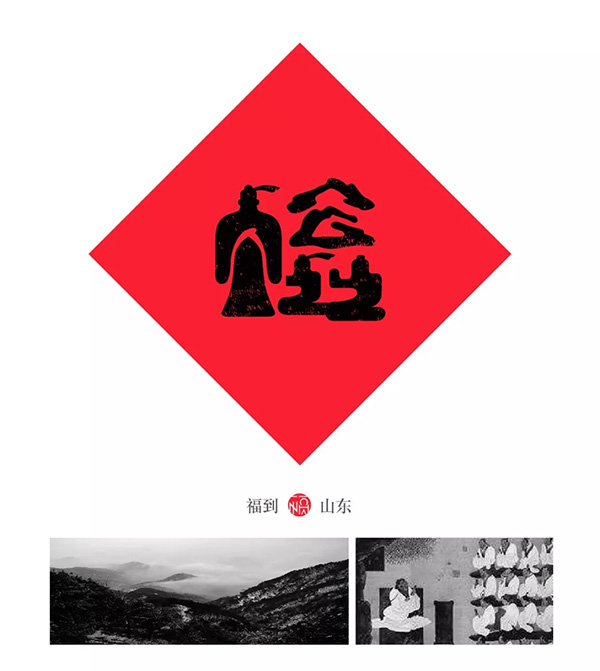
Shandong Fu features Confucian philosophy.
Wuhan Fu
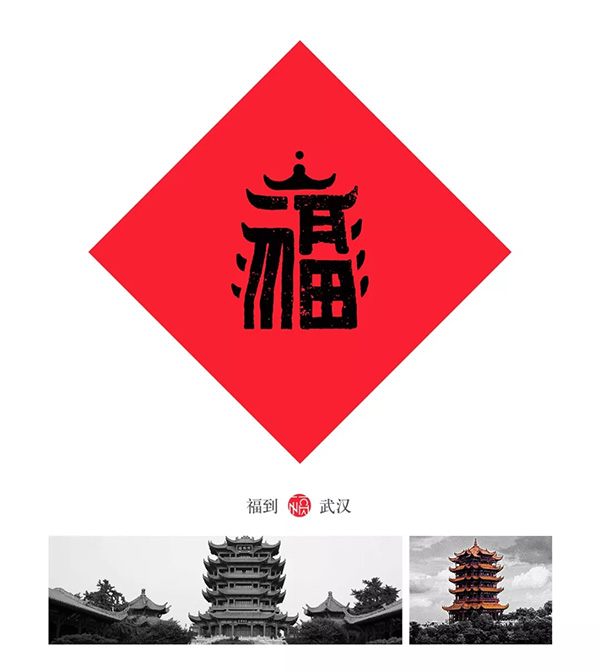
Wuhan Fu uses the Yellow Crane Tower as a word sign.


